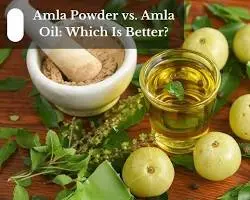From Green Gold to Global Glory: Your Ultimate Guide to Exporting Amla from India
Often called "green gold" or the "Indian Gooseberry," Amla (Phyllanthus emblica) is more than just a fruit; it's a powerhouse of nutrition and a cornerstone of Ayurveda. With the global wellness trend reaching an all-time high, the demand for this Vitamin C-rich superfood is exploding. For Indian entrepreneurs, this presents a golden opportunity to tap into a lucrative export market.
This guide will walk you through everything you need to know—from sourcing the best Amla to navigating documentation and finding international buyers. Let's begin your journey to becoming a successful Amla exporter! 🚀

Why is Amla a Golden Export Opportunity?
Before diving into the "how," let's understand the "why." The global demand for Amla isn't just a fad; it's driven by solid market trends:
The Global Wellness Boom: Consumers worldwide, particularly in North America and Europe, are actively seeking natural, immunity-boosting products. Amla, with one of the highest concentrations of Vitamin C in the plant kingdom, fits this demand perfectly.
Incredible Versatility: Amla isn't just exported as a fresh fruit. Its true potential lies in its value-added forms:
Amla Powder: Used in supplements, smoothies, and herbal formulations.
Amla Juice: A popular health drink.
Amla Oil: A key ingredient in the hair care and cosmetics industry.
Dried Amla & Amla Candy (Murabba): Popular as healthy snacks.
Ayurveda's Global Reach: As Ayurveda gains international recognition, the demand for its core ingredients, like Amla, is rising in markets with a focus on holistic health.
"Make in India" Advantage: India is the world's largest producer of Amla, giving exporters a significant advantage in sourcing, quality, and price competitiveness.

The A-Z Guide to Exporting Amla from India
Ready to turn this opportunity into a business? Follow these essential steps.
Step 1: Foundational Business & Legal Setup
First, legitimize your business.
Register Your Company: Choose a business structure (Sole Proprietorship, Partnership, LLP, etc.) and register it.
Get Your IEC (Importer-Exporter Code): This is a mandatory 10-digit code required for any import/export business in India. You can apply for it online on the DGFT (Directorate General of Foreign Trade) portal.
GST Registration: Register for GST as it is essential for all commercial transactions.
RCMC from APEDA: Obtain a Registration-Cum-Membership Certificate (RCMC) from APEDA (Agricultural and Processed Food Products Export Development Authority). APEDA is the key government body for exporting agricultural products like Amla.
Step 2: Sourcing High-Quality Amla
The quality of your product determines your success.
Top Sourcing Regions: The best quality Amla is predominantly grown in states like Uttar Pradesh (especially Pratapgarh district, known as the "Amla city of India"), Madhya Pradesh, Tamil Nadu, and Rajasthan.
Connect with Farmers & FPOs: Directly source from farmers or Farmer Producer Organizations (FPOs) to ensure freshness, fair pricing, and traceability.
Quality Check: Ensure the fruit is fresh, free from blemishes, and meets the size and quality standards required by your target market.
Step 3: Processing and Value Addition (The Profit Multiplier!)
This is where you can significantly increase your profit margins. Instead of just exporting fresh fruit (which has a short shelf life), focus on processed forms.
Set up a Processing Unit: Depending on your scale, you can set up a small unit for drying, pulverizing (for powder), oil extraction, or juicing.
Maintain Hygiene Standards: International buyers have strict hygiene and quality standards (like HACCP, ISO 22000). Adhering to these is non-negotiable.
Step 4: Smart Packaging & Labeling
Your packaging must protect the product and comply with international regulations.
For Powder/Dried Amla: Use multi-layer, moisture-proof, food-grade pouches or containers.
For Juice/Oil: Use sterilized, properly sealed glass or food-grade plastic bottles.
Labeling: Your label must include the product name, ingredients, net weight, manufacturing/expiry date, country of origin, and any nutritional information required by the importing country.
Step 5: Finding International Buyers
Now, find customers for your product.
Online B2B Portals: List your products on platforms like Alibaba, IndiaMART, Global Sources, and TradeIndia.
APEDA Buyer-Seller Meets: APEDA regularly organizes events to connect Indian exporters with international buyers.
International Trade Fairs: Participate in food and wellness expos in your target countries. This is one of the best ways to meet serious buyers.
Indian Embassies: The commercial wings of Indian embassies abroad can provide lists of potential importers.
Step 6: Pricing, Logistics & Shipping
Pricing: Calculate your price by considering the cost of sourcing, processing, packaging, logistics, and your desired profit margin. Understand shipping terms like FOB (Free on Board) and CIF (Cost, Insurance, and Freight).
Logistics Partner: Hire a reliable freight forwarder. They will handle everything from customs clearance to booking cargo space on a ship or airplane.
Shipping: For fresh Amla, air freight is necessary due to its short shelf life. For processed products like powder and oil, sea freight is a more cost-effective option.

Essential Documents Checklist
Paperwork is crucial. Ensure you have the following ready for every shipment:
Commercial Invoice cum Packing List
Bill of Lading (for sea freight) or Airway Bill (for air freight)
Certificate of Origin
Phytosanitary Certificate: This is mandatory for plant products and certifies that they are free from pests and diseases.
IEC Code
APEDA RCMC
Quality and Food Safety Certifications (e.g., lab test reports, organic certification if applicable)
Top Export Markets & Profit Margins

Top Markets: The highest demand for Amla and its products comes from the USA, Canada, Germany, the UK, UAE, Saudi Arabia, Malaysia, and Japan.
Expected Profit Margin: The profit margin in Amla exports can be very attractive, typically ranging from 30% to over 70%. The margin is highest for value-added products like organic Amla powder and cold-pressed Amla oil compared to fresh fruit.
Final Thoughts
Exporting Amla from India is not just a business venture; it's an opportunity to take a piece of India's ancient wellness heritage to the world. With meticulous planning, a focus on quality, and a smart strategy, you can build a highly profitable and sustainable export business.
The global market is ready for the goodness of Amla. Are you ready to deliver it?